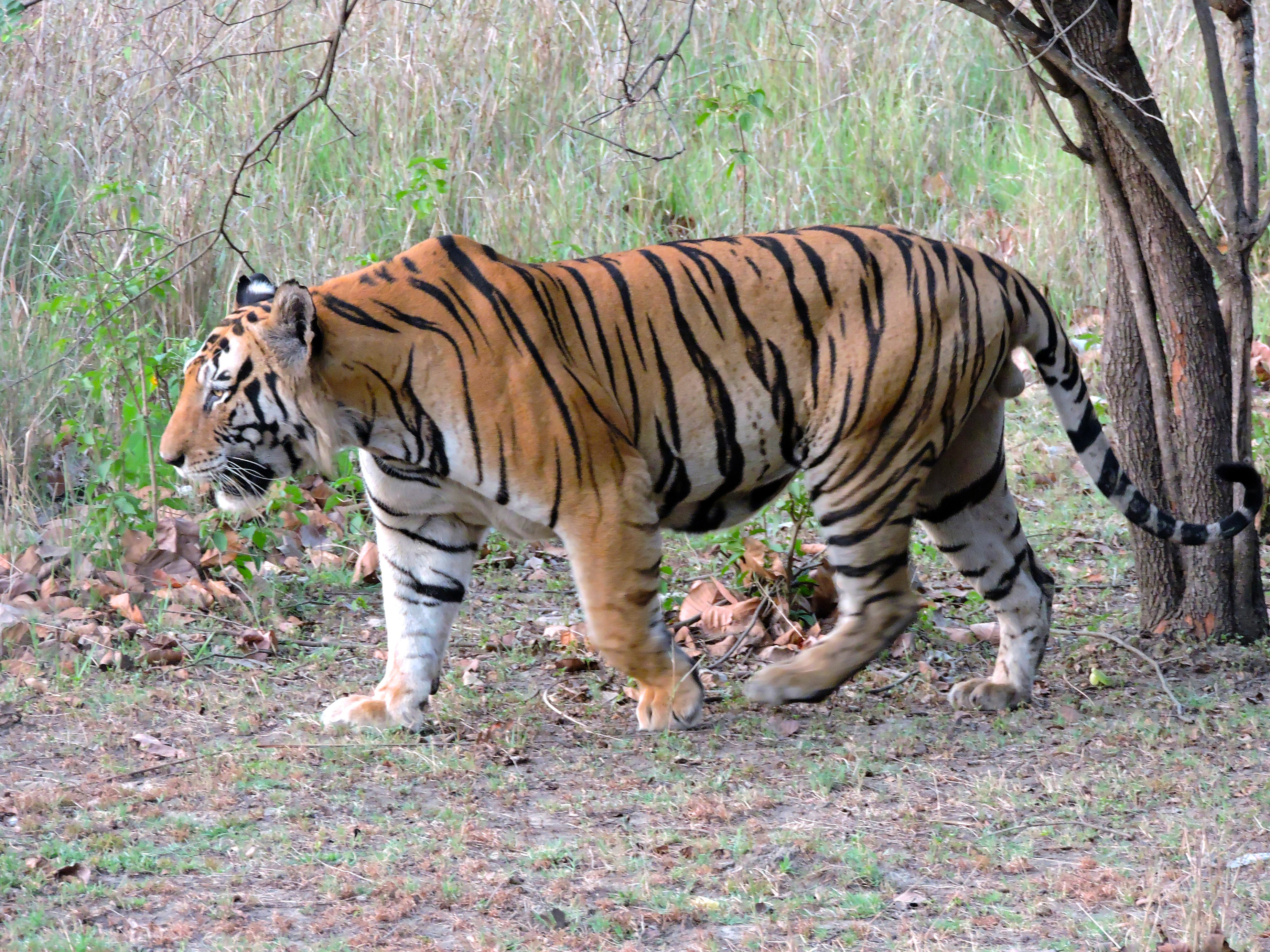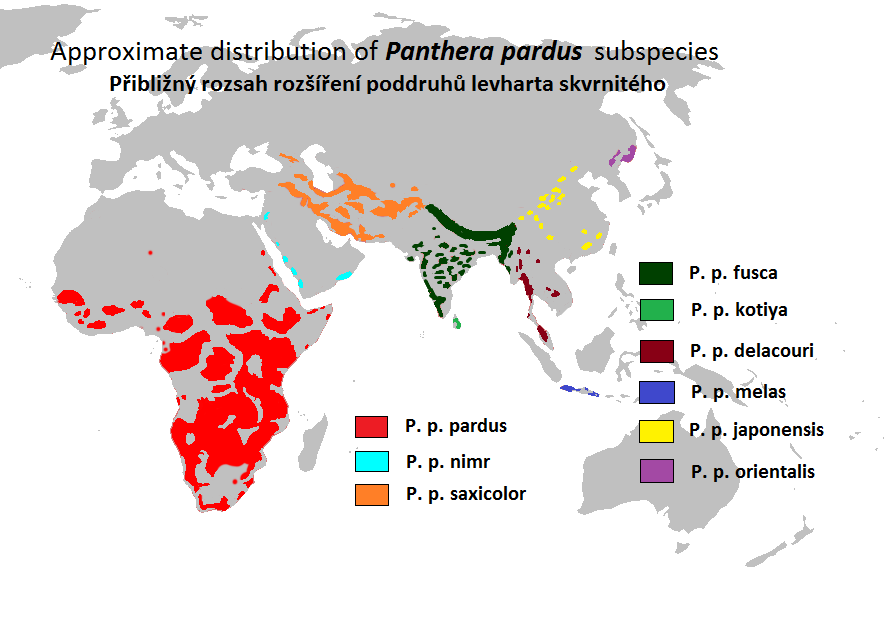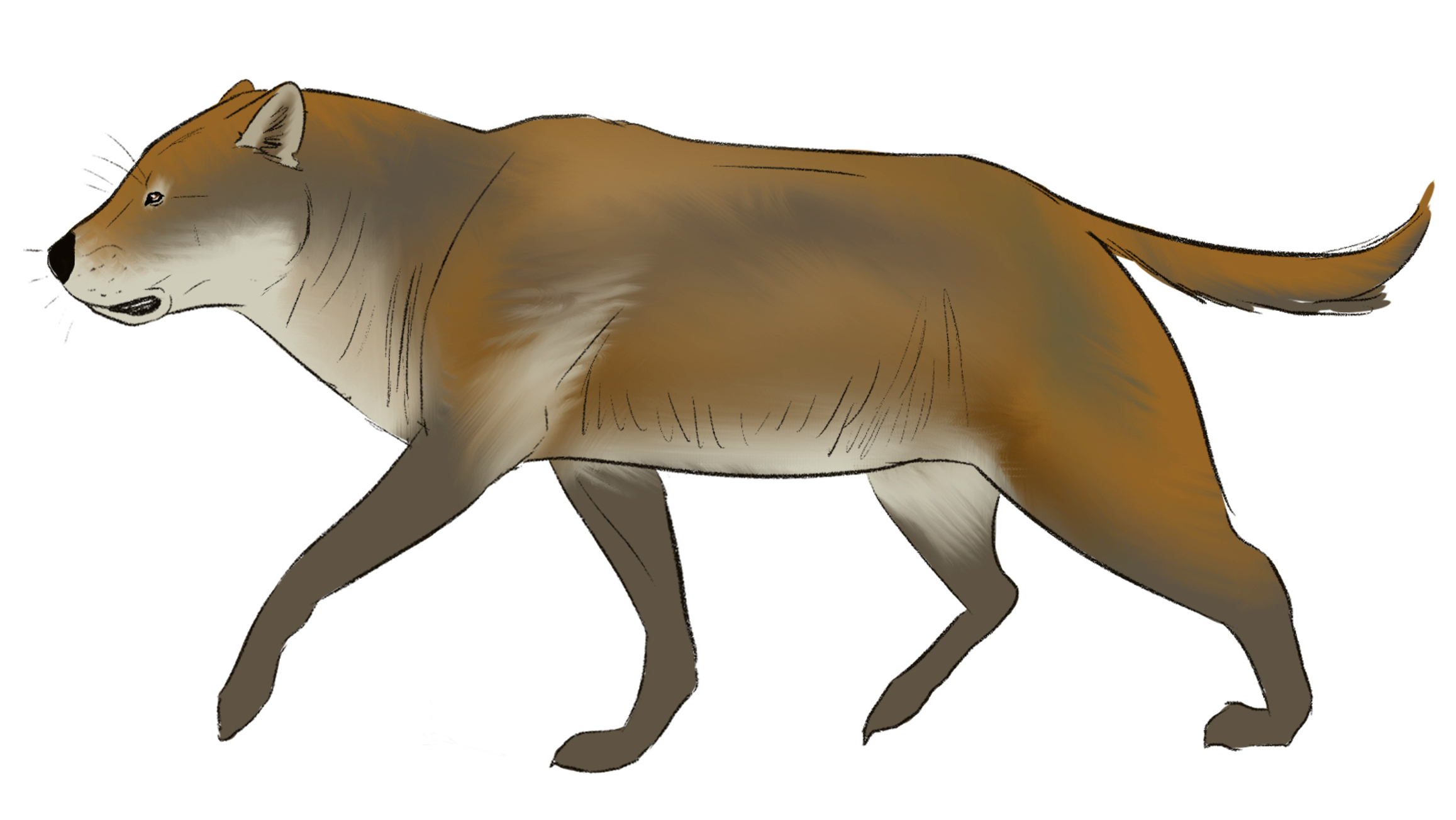|
Dhole
The dhole ( ; ''Cuon alpinus'') is a canid native to South, East and Southeast Asia. It is anatomically distinguished from members of the genus ''Canis'' in several aspects: its skull is convex rather than concave in profile, it lacks a third lower molar, and the upper molars possess only a single cusp as opposed to between two and four. During the Pleistocene, the dhole ranged throughout Asia, with its range also extending into Europe (with a single putative, controversial record also reported from North America) but became restricted to its historical range 12,000–18,000 years ago. It is now extinct in Central Asia, parts of Southeast Asia, and possibly the Korean peninsula and Russia. Genetic evidence indicates that the dhole was the result of reticulate evolution, emerging from the hybridization between a species closely related to genus ''Canis'' and one from a lineage closely related to the African wild dog (''Lycaon pictus''). The dhole is a highly social ani ... [...More Info...] [...Related Items...] OR: [Wikipedia] [Google] [Baidu] |
Ussuri Dhole
The Ussuri dholeHeptner, V. G. & Naumov, N. P. (1998). Mammals of the Soviet Union Vol. II Part 1a, SIRENIA AND CARNIVORA (Sea cows; Wolves and Bears)', Science Publishers, Inc. USA., pp. 566–86, (''Cuon alpinus alpinus''), also known as the Eastern Asiatic dhole and the Chinese dhole, is the nominate subspecies of the dhole wild dog native to Asia. The Ussuri dhole subspecies is originally native to the Russian Far East and parts of China, the Korean Peninsula and Mongolia, though it is presumed regionally extinct or extirpated in most of its historical range, and it possibly exists as fragmented populations in the Russian Far East. Physical descriptions The Ussuri dhole is the largest subspecies of ''Cuon alpinus'', and the most northerly in range, possessing a narrower skull and a bright-reddish coat with more pronounced white fur, extending from the lower jaw to the underbelly and inner legs, compared to other dholes. Much like the Tian Shan dhole (''C. a. hesperius''), w ... [...More Info...] [...Related Items...] OR: [Wikipedia] [Google] [Baidu] |
Tiger
The tiger (''Panthera tigris'') is a large Felidae, cat and a member of the genus ''Panthera'' native to Asia. It has a powerful, muscular body with a large head and paws, a long tail and orange fur with black, mostly vertical stripes. It is traditionally classified into nine Holocene, recent subspecies, though some recognise only two subspecies, mainland Asian tigers and the island tigers of the Sunda Islands. Throughout the tiger's range, it inhabits mainly forests, from coniferous and temperate broadleaf and mixed forests in the Russian Far East and Northeast China to tropical and subtropical moist broadleaf forests on the Indian subcontinent and Southeast Asia. The tiger is an apex predator and preys mainly on ungulates, which it takes by ambush. It lives a mostly solitary life and occupies home ranges, defending these from individuals of the same sex. The range of a male tiger overlaps with that of multiple females with whom he mates. Females give birth to usually two or ... [...More Info...] [...Related Items...] OR: [Wikipedia] [Google] [Baidu] |
Tien Shan Dhole
The Tian Shan dhole (''Cuon alpinus hesperius''), also known as the Siberian dhole, Western Asiatic dhole,Fox, M. W. (1984), ''The Whistling Hunters: Field Studies of the Indian Wild Dog'' (Cuon Alpinus), Steven Simpson Books, p. 40, or northern dhole is an extinct subspecies of dhole native to the Altai Mountains, Altai and Tian Shan mountain ranges, and possibly Pamir Mountains, Pamir. Only 15 records of captured and killed specimens are known, and it most likely went extinct since 1946. Characteristic The Tian Shan dhole is somewhat smaller than the Ussuri dhole, with a relatively wider skull and much lighter, straw-coloured winter fur coat. It has a short, wide face and a skull measuring 180 mm long on average. The top of the head and outer sides of the ears are reddish-straw coloured. The upper surface of the neck is dirty-white, with a narrow, sandy-yellow-coloured band running along the upper surface of the back from the ears to the shoulders. The outer surfaces of t ... [...More Info...] [...Related Items...] OR: [Wikipedia] [Google] [Baidu] |
European Dhole
The European dhole (''Cuon alpinus europaeus'') was a paleosubspecies of the dhole, which ranged throughout much of Western and Central Europe during the Middle and Late Pleistocene. Like the modern Asiatic populations, it was a more progressive form than other prehistoric members of the genus ''Cuon'', having transformed its lower molar tooth into a single cusped slicer. It was virtually indistinguishable from its modern counterpart, save for its greater size, which closely approached that of the gray wolf.Kurtén, Björn (1968), ''Pleistocene mammals of Europe'', Weidenfeld and Nicolson, pp. 111-114 Lineage ''Cuon alpinus priscus'' Thenius 1954 was the first member of genus ''Cuon'' to be identified in Europe during the Middle Pleistocene. This was followed by ''Cuon alpinus fossilis'' Nehring 1890, then ''Cuon alpinus europaeus'' Bourguignat 1868 during the Middle and Late Pleistocene. The descent is thought to be ''C. a. priscus→C. a. fossilis→C. a. europaeus''. In compari ... [...More Info...] [...Related Items...] OR: [Wikipedia] [Google] [Baidu] |
African Wild Dog
The African wild dog (''Lycaon pictus''), also called painted dog and Cape hunting dog, is a wild canine native to sub-Saharan Africa. It is the largest wild canine in Africa, and the only extant member of the genus '' Lycaon'', which is distinguished from ''Canis'' by dentition highly specialised for a hypercarnivorous diet and by a lack of dewclaws. It is estimated that there are around 6,600 adults (including 1,400 mature individuals) living in 39 subpopulations, all threatened by habitat fragmentation, human persecution and outbreaks of disease. As the largest subpopulation probably consists of fewer than 250 individuals, the African wild dog has been listed as endangered on the IUCN Red List since 1990. The African wild dog is a specialized hunter of terrestrial ungulates, mostly hunting at dawn and dusk, but also displays diurnal activity. It captures its prey by using stamina and cooperative hunting to exhaust them. Its natural competitors are lions and spotted hyenas ... [...More Info...] [...Related Items...] OR: [Wikipedia] [Google] [Baidu] |
Leopard
The leopard (''Panthera pardus'') is one of the five extant cat species in the genus ''Panthera''. It has a pale yellowish to dark golden fur with dark spots grouped in rosettes. Its body is slender and muscular reaching a length of with a long tail and a shoulder height of . Males typically weigh , and females . The leopard was first described in 1758, and several subspecies were proposed in the 19th and 20th centuries. Today, eight subspecies are recognised in its wide range in Africa and Asia. It initially evolved in Africa during the Early Pleistocene, before migrating into Eurasia around the Early–Middle Pleistocene transition. Leopards were formerly present across Europe, but became extinct in the region at around the end of the Late Pleistocene-early Holocene. The leopard is adapted to a variety of habitats ranging from rainforest to steppe, including arid and montane areas. It is an opportunistic predator, hunting mostly ungulates and primates. It relies on it ... [...More Info...] [...Related Items...] OR: [Wikipedia] [Google] [Baidu] |
Canidae
Canidae (; from Latin, ''canis'', "dog") is a family (biology), biological family of caniform carnivorans, constituting a clade. A member of this family is also called a canid (). The family includes three subfamily, subfamilies: the Caninae, and the extinct Borophaginae and Hesperocyoninae. The Caninae are known as canines, and include Dog, domestic dogs, Wolf, wolves, coyotes, raccoon dogs, Fox, foxes, jackals and other species. Canids are found on all continents except Antarctica, having arrived independently or accompanied by Human, human beings over extended periods of time. Canids vary in size from the gray wolf to the fennec fox. The body forms of canids are similar, typically having long muzzles, upright ears, teeth adapted for cracking bones and slicing flesh, long legs, and bushy tails. They are mostly social animals, living together in family units or small groups and behaving co-operatively. Typically, only the dominant pair in a group breeds and a litter of young ... [...More Info...] [...Related Items...] OR: [Wikipedia] [Google] [Baidu] |
Canis
''Canis'' is a genus of the Caninae which includes multiple extant taxon, extant species, such as Wolf, wolves, dogs, coyotes, and golden jackals. Species of this genus are distinguished by their moderate to large size, their massive, well-developed skulls and dentition, long legs, and comparatively short ears and tails.Heptner, V. G.; Naumov, N. P. (1998). ''Mammals of the Soviet Union'' Vol.II Part 1a, SIRENIA AND CARNIVORA (Sea Cows, Wolves and Bears). Science Publishers, Inc. USA. pp. 124–129. . Taxonomy The genus ''Canis'' (Carl Linnaeus, 1758) was published in the 10th edition of Systema Naturae and included the dog-like carnivores: the domestic dog, wolves, coyotes and jackals. All species within ''Canis'' are Phylogenetics, phylogenetically closely related with 78 chromosomes and can potentially hybrid (biology), interbreed. In 1926, the International Commission on Zoological Nomenclature (ICZN) in Opinion 91 included Genus ''Canis'' on its ''Official Lists and Indexes o ... [...More Info...] [...Related Items...] OR: [Wikipedia] [Google] [Baidu] |
Brian Houghton Hodgson
Brian Houghton Hodgson (1 February 1801 – 23 May 1894) was a pioneer natural history, naturalist and ethnologist working in India and Nepal where he was a British Resident (title), Resident. He described numerous species of birds and mammals from the Himalayas, and several birds were named after him by others such as Edward Blyth. He was a scholar of Newar Buddhism and wrote extensively on a range of topics relating to linguistics and religion. He was an opponent of the British proposal to introduce English as the official medium of instruction in Indian schools. Early life Hodgson was the second of seven children of Brian Hodgson (1766–1858) and his wife Catherine (1776–1851), and was born at Lower Beech, Prestbury, Cheshire. His father lost money in a bad bank investment and had to sell their home at Lower Beech. A great-aunt married to Beilby Porteus, the Bishop of London, helped them but the financial difficulties were great. Hodgson's father worked as a warden of the M ... [...More Info...] [...Related Items...] OR: [Wikipedia] [Google] [Baidu] |
Endangered
An endangered species is a species that is very likely to become extinct in the near future, either worldwide or in a particular political jurisdiction. Endangered species may be at risk due to factors such as habitat loss, poaching, invasive species, and climate change. The International Union for Conservation of Nature (IUCN) Red List lists the global conservation status of many species, and various other agencies assess the status of species within particular areas. Many nations have laws that protect conservation-reliant species which, for example, forbid hunting, restrict land development, or create protected areas. Some endangered species are the target of extensive conservation efforts such as captive breeding and habitat restoration. Human activity is a significant cause in causing some species to become endangered. Conservation status The conservation status of a species indicates the likelihood that it will become extinct. Multiple factors are c ... [...More Info...] [...Related Items...] OR: [Wikipedia] [Google] [Baidu] |
Dominance Hierarchies
In the zoological field of ethology, a dominance hierarchy (formerly and colloquially called a pecking order) is a type of social hierarchy that arises when members of animal social groups interact, creating a ranking system. Different types of interactions can result in dominance depending on the species, including ritualized displays of aggression or direct physical violence. In social living groups, members are likely to compete for access to limited resources and mating opportunities. Rather than fighting each time they meet, individuals of the same sex establish a relative rank, with higher-ranking individuals often gaining more access to resources and mates. Based on repetitive interactions, a social order is created that is subject to change each time a dominant animal is challenged by a subordinate one. Definitions Dominance is an individual's preferential access to resources over another based on coercive capacity based on strength, threat, and intimidation, compare ... [...More Info...] [...Related Items...] OR: [Wikipedia] [Google] [Baidu] |
Hybrid (biology)
In biology, a hybrid is the offspring resulting from combining the qualities of two organisms of different varieties, subspecies, species or genera through sexual reproduction. Generally, it means that each cell has genetic material from two different organisms, whereas an individual where some cells are derived from a different organism is called a chimera. Hybrids are not always intermediates between their parents such as in blending inheritance (a now discredited theory in modern genetics by particulate inheritance), but can show hybrid vigor, sometimes growing larger or taller than either parent. The concept of a hybrid is interpreted differently in animal and plant breeding, where there is interest in the individual parentage. In genetics, attention is focused on the numbers of chromosomes. In taxonomy, a key question is how closely related the parent species are. Species are reproductively isolated by strong barriers to hybridization, which include genetic and morph ... [...More Info...] [...Related Items...] OR: [Wikipedia] [Google] [Baidu] |










